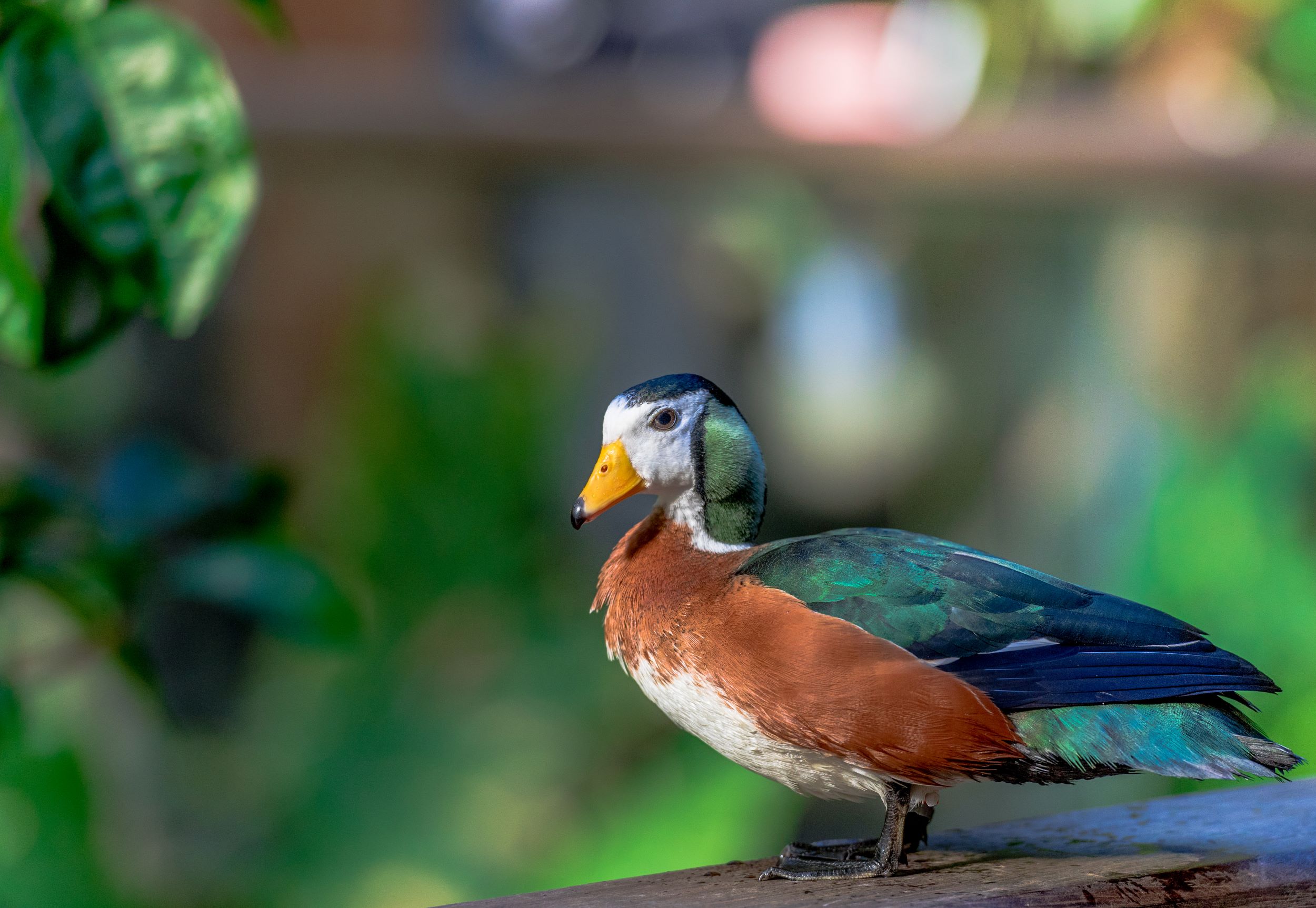
African Pygmy Goose (Not found in Utah)
The African Pygmy Goose, scientifically known as Nettapus auritus, is one of the smallest waterfowl species and a fascinating member of the Anatidae family. Native to sub-Saharan Africa, this diminutive duck is known for its striking appearance and unique behaviors. The male African Pygmy Goose boasts a vivid green patch on its wings and a white face with a distinctive black eye patch, while the female has a more subdued color palette, predominantly gray with a brownish head and white throat. Despite their name, African Pygmy Geese are more closely related to ducks than true geese and are notable for their compact, rounded bodies and short bills, which give them a distinctive profile among waterfowl.
Habitat-wise, the African Pygmy Goose prefers still, freshwater environments. They are typically found in swamps, shallow lakes, and slow-flowing rivers, where there is an abundance of water lilies and other aquatic plants. These environments not only provide them with food but also offer protection and nesting sites. The presence of water lilies is particularly significant as these ducks often rest on the floating leaves, a unique behavior among ducks. The African Pygmy Goose's reliance on these specific habitats highlights the importance of conserving aquatic ecosystems in Africa, which face threats from water pollution, habitat destruction, and climate change.
In terms of diet, the African Pygmy Goose feeds mainly on seeds, especially those of water lilies, as well as small insects and other aquatic invertebrates. Their feeding habits are predominantly surface-based; they rarely dive, instead preferring to dabble and forage among the floating vegetation. This feeding style is well-suited to their habitat, allowing them to take advantage of the resources available in their predominantly still-water environments. Their role in seed dispersal for plants like water lilies underscores their importance in maintaining the health and balance of their ecosystems.
The breeding behavior of the African Pygmy Goose is as unique as its feeding habits. They are monogamous and often nest in tree cavities or in dense reed beds near water. The female lays a clutch of six to twelve eggs, which she incubates while the male stands guard nearby. This nesting strategy, utilizing tree cavities, again sets them apart from many other duck species and reflects their adaptation to the densely vegetated wetlands of Africa. The choice of nesting site plays a critical role in the survival of the chicks, offering protection from ground predators.
Conservation of the African Pygmy Goose is vital due to the specific nature of their habitat requirements and the growing environmental challenges in their regions. Efforts to preserve their habitats include protecting wetlands from drainage and pollution, managing water levels to ensure the health of aquatic plant communities, and safeguarding nesting areas from disturbance. As indicators of healthy wetland ecosystems, the well-being of African Pygmy Geese is closely linked to the overall health of these environments. Their conservation is not only crucial for maintaining biodiversity but also for ensuring the sustainability of the ecosystems on which numerous other species depend. The African Pygmy Goose, with its distinctive appearance and unique ecological role, serves as a symbol of the rich and diverse wildlife found in Africa's wetlands.